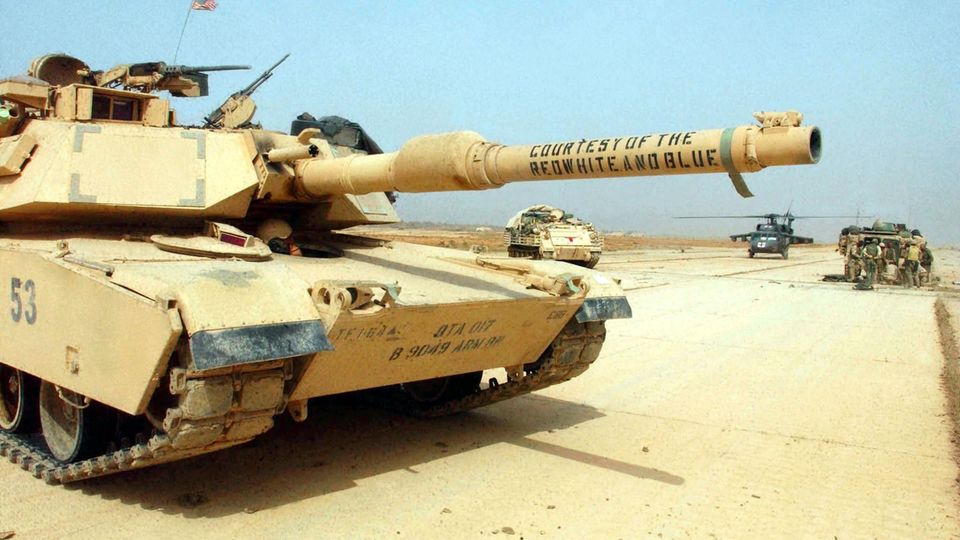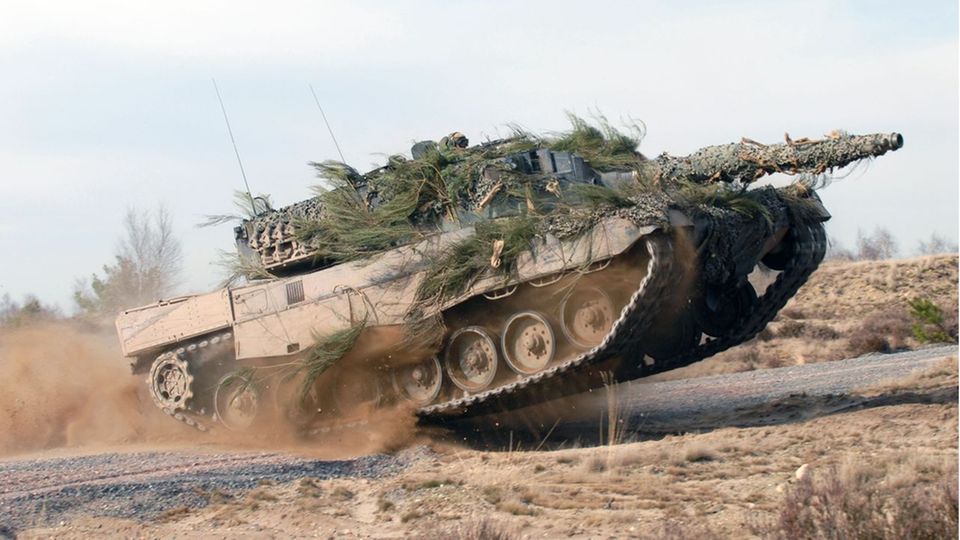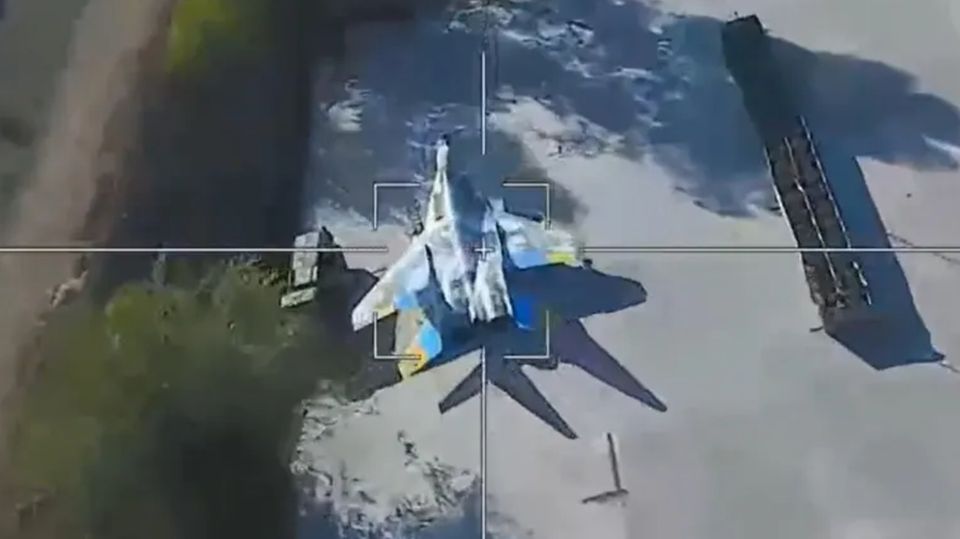War in Ukraine
End of a myth – Kiev loses first US M1 Abrams tank
The screenshot shows the controls of a drone pilot.
© Telegram
The M1 Abrams is designed to be as secure as a fortress. Now the US device has been destroyed. The $6 million tank was taken down by cheap drones.
Now the 47th Mechanized Brigade, which received this tank, faces the Russians in battle. The first US tank was destroyed, and a clearing tank on an Abrams chassis had already been lost. The loss in itself is not surprising, but the inglorious demise of the massive military device is shocking.
Suicide mission
The fame of the tank weapon draws on heroic situations from the Second World War. Of duels, daring breakthroughs and tank battles that literally shook the earth. The Abrams, however, was hunted down by cheap drones. An observation drone spotted the tank east of the Russian-captured town of Stepove, in front of the Ukrainian-held Berdychi. From there he probably rolled to a firing position. This mission was already risky, not to say suicidal. In the morning, the Russians had already shot down a Bradley armored personnel carrier at the same location. (The spellings follow Google Maps).
Tank completely destroyed
A later video shows Abrams burning in the fields northwest of Berdychi. The actual shooting has not yet been documented. Russian bloggers describe the process as follows: First the tank was immobilized by drones and then destroyed by a more powerful drone. In the video, the tank is ablaze, later screenshots show the burned-out wreckage. The Russians have released a picture of the drone pilot. He is supposed to serve in the 15th Guards Rifle Brigade “Alexandria”. To avoid speculation: His patch does not show the Nazi symbol “Black Sun”, but a Slavic sun wheel, Kolovrat. Director and actor Ivan Okhlobystin had promised to reward the soldiers for shooting down an Abrams for the first time. He explained that he would pay out the promised ten million rubles – about 100,000 euros.
No video of the impact
The crew was probably able to survive. If the procedure is correct, they will have booted out after their tank became immobile. When the second hit occurred, the crew would no longer have been on board. The wreckage shows that the tank’s blow-out hatches are open. If the crew was able to escape, they must have closed the exit hatches again. Such hatches serve to protect the crew. Modern western tanks are designed to distribute fire, smoke and explosion pressure in a controlled manner to enable the crew to escape. The actual hit has not yet been documented; it is also conceivable that the tank was destroyed with just one drone attack.
In the Ukraine war, however, this is often not necessary. Mines, light drones and artillery hits render most tanks helpless and unable to move, but do not lead to destruction. The crew then abandons their tank, and the eventual fatal hit hits an unmanned device. The first Leopard 2s were knocked out by mines and artillery. The shooting down of a Challenger 2 tank at Robotyne happened like this. At first the tank broke down because it hit a mine. It was later destroyed by a Korsun anti-tank missile. His tower didn’t blow up spectacularly, but the pressure of the explosion did push it up and move it a few centimeters. If there had been anyone else on board, he would inevitably have died. In the event of a penetrating hit from a heavy weapon, even the best protective mechanisms are only of limited help.
The drone imposes the nature of the battle
Commentators point out that the US probably did not equip the devices supplied with the best frontal armor. The argument misses the core of the problem. The drone forces the tank into the fight it wants to avoid. The commander of a battle tank never wants to show the enemy the side and certainly not the back, but always the heavily armored front. He wants to take advantage of ground cover so that the enemy can only target the upper part of the tank and, if possible, not the vulnerable tracks and chassis. In previous wars, infantrymen repeatedly managed to “outwit” tanks in individual cases. They stayed behind in the rubble to engage the enemy tank with a bazooka on the side. They could be rolled over in a hole to attach a mine or a concentrated charge to the engine or tracks. This always required great courage and was hardly possible when infantry accompanied the enemy tanks.
All-round protection required
Drones specifically select the soft spots of the tanks. Once they spot a victim, they can attack from any angle and will always miss the massive frontal armor. Depending on the load and danger of the drone and the level of protection of the target, they look for the point of attack. They work so precisely that they can target and hit even the small spot on the target optics on the turret. In the case of a heavy battle tank, light drones will always try to damage the tracks and undercarriage first. Instead of frontal protection, a tank today needs all-round and top protection. The “roof” of conventional battle tanks is hardly protected. Subsequent protection is a problem, especially for the overweight tanks of the West. Abrams, Leopard 2 and Challenger 2 have become increasingly heavier due to modernization over the course of their long lives; they can no longer hold much weight. The newly introduced models from the Russians have more room for improvement here. They are now paving their roof cages with reactive armor.





